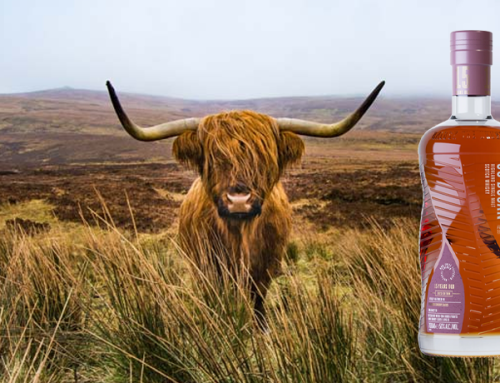For July, we’re heading back home – to the Apple Isle this time. If this months whisky wasn’t from Australia it would be a certifiable Sherry Bomb! Instead we’re coining the term ‘Apera Assault’ to describe a huge Apera influenced whisky! Distilled at an airport in a building known as ‘The Holyman’ in Tasmanian aviation circles. From the Launceston Distillery – this months whisky is the Launceston Distillery Apera Cask Matured.
Firstly, if you’re unsure what ‘Apera’ is – it’s what we now call ‘sherry’ that’s made in Australia. Since September 1, 2010, Aussie wine-makers have agreed to use this term to acknowledge the Spanish ‘owners’ of the term ‘sherry’. The same change saw all port produced in Australia named as ‘Tawny’. The Launceston Distillery Apera Cask Matured, then, is aged in ex- ‘sherry style fortified wine’ barrels. Made of European oak and “small’ is the only other info I can find on these casks.
Beautiful deep, almost burnt orange colour.
On the nose a massive sweet honey and cinnamon hit with a trace of new leather belt. Floral and fruity with some liquorice wafting around there as well.
On the palate it’s very sultana-ey and very mouth-warming at first. Dried apricots and honey. Sweet and spicy with chocolate and more cinnamon. Nice and rich and round and luscious.
A pleasant amount of warmth in the finish – with a lovely golden syrup flavour around the edges.
LAUNCESTON DISTILLERY APERA – DISTILLERS NOTES
Bottle Size : 500ml
ABV : 46% abv
Region : Tasmania
Peated : No
A full flavoured whisky, it is double distilled and is non-chill filtered to retain depth of character.
Colour: Rich copper.
Taste: A pleasant oily mouthfeel with subtle apera dried fruit flavours, malt, spice, sultanas and caramel.
Nose: Engaging fragrant aromas, fruity with black cherries, vanilla and dates.
Finish: A smooth lingering finish, with apera influence of dried fruit and spice.

ABOUT THE DISTILLERY
Launceston is no stranger to whisky production. Back in 1824 the Caledonian Whisky Distillery was built there and quickly became one of Australia’s leading spirit producers. Sadly, in 1839, the Distillation Prohibition Act was enacted – outlawing the distilling of spirits across the island, including Launceston’s Caledonian. The Launceston Distillery is the first [legal] distilling to be carried out in Launceston since the Prohibition Act was passed.
The Distillation Prohibition Act of 1839 is a bit interesting in itself. The Act is primarily attributed to the [then] Governor of Tasmania’s wife, Lady Jane Franklin’s hatred of drunkeness. Her (in)famous quote “I would prefer barley be fed to pigs than it be used to turn men into swine” convinced her husband – Governor John Franklin – to outlaw the distillation of spirits in 1839. Thus the 16 or so legal distilleries in Tasmania at the time were forced to close up shop. And so it stayed for around 150 years until Bill Lark famously went trout fishing, noticed how fantastic the climate and natural resources of Tassy matched traditional whisky producing areas and decided to have a crack at overturning the law.
Since the Act was overturned in 1992, as we all know, Tasmania’s whisky industry has gone from strength to strength winning countless international awards and becoming world famous for it’s whisky.


Situated at Launceston Airport, Launceston Distillery is located in historic Hanger 17. This hangar is Tasmania’s oldest aviation building still standing. Built originally by Tasmanian Aerial Services in 1933 – hangar 17 expanded over the years and host to some of the countries pivotal aviation companies – Tasmanian Aerial Services became ANA (Australian National Airlines) which later became Ansett. Hangar 17 could rightfully be said to be one of the homes of commercial aviation in Australia and pivotal in the development of our nation’s domestic airlines.
In contrast to the building it occupies – Launceston Distillery is a very young business. Conversion of Hangar 17 into the distillery was done in 2015. It uses all Tasmanian ingredients in it’s whisky production – even the stills are Tasmanian made. Of course, it uses Tasmanian coopered casks as well.





